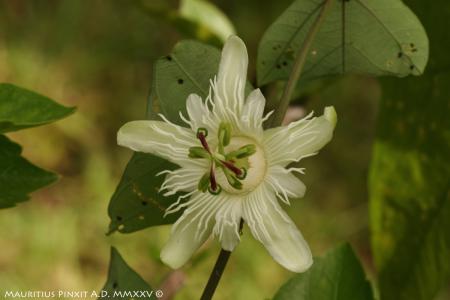
SUBGENUS: decaloba
SUPERSECTION: decaloba
SECTION: decaloba
GEOGRAPHICAL DISTRIBUTION OR ORIGIN:
French Guiana, Surinam, Trinitad.
MINIMUM TEMPERATURE: 10 °C
IDEAL MINIMUM TEMPERATURE: 12 °C
SYNONYMS: P. europhylla Mast., P. geminiflora DC., P. hemicycla G. F. W. Mey., P. surinamensis Miq.
ETYMOLOGY: Referred to the form of leaves bat wings (Lat. vespertilio, bat).
DESCRIPTION:
The glossy leaf blade is characteristic of many species from French Guiana and Guyana. The shape of the bilobate, truncated leaves, with a transverse bearing and supported by a long glandless petiole, is typical of the subgenus Decaloba.
The leaves of this plant are curious and once again call to mind bat wings, with their characteristic of being wider rather than longer than the petiole.
In fact, they measure up to 10 cm in length and 12 cm in width. The base is rounded in a semicircle. A slightly concave line, which delimits the lateral lobes, interrupts the curvature of the semicircle itself. A small hint of the third (central) lobe is highlighted by a squat cusp, which is located at the end of the central rib.
The flowers are white and green and have a diameter of about 5 cm. The upper surface of the sepals, which are quite twisted and wavy, is green at the edges and extremities, then fades to pure white in the middle. The petals, shorter and more regular, are completely white. The corona is of the same white colour and contrasts with the green of the androgynophore. It is composed of two series of ligulate filaments arranged in a disordered, irregular way.
The ovoid fruit, about 2 cm in diameter, is dark purple when ripe.
This passionflower is a vigorous and robust climber with lively growth. In addition to the beauty of its leaves, it is cultivated by collectors of tropical butterflies, as some of the more colourful species complete their cycle on this plant.
It requires
minimum temperatures of 10°C and is propagated from seed and from cuttings.